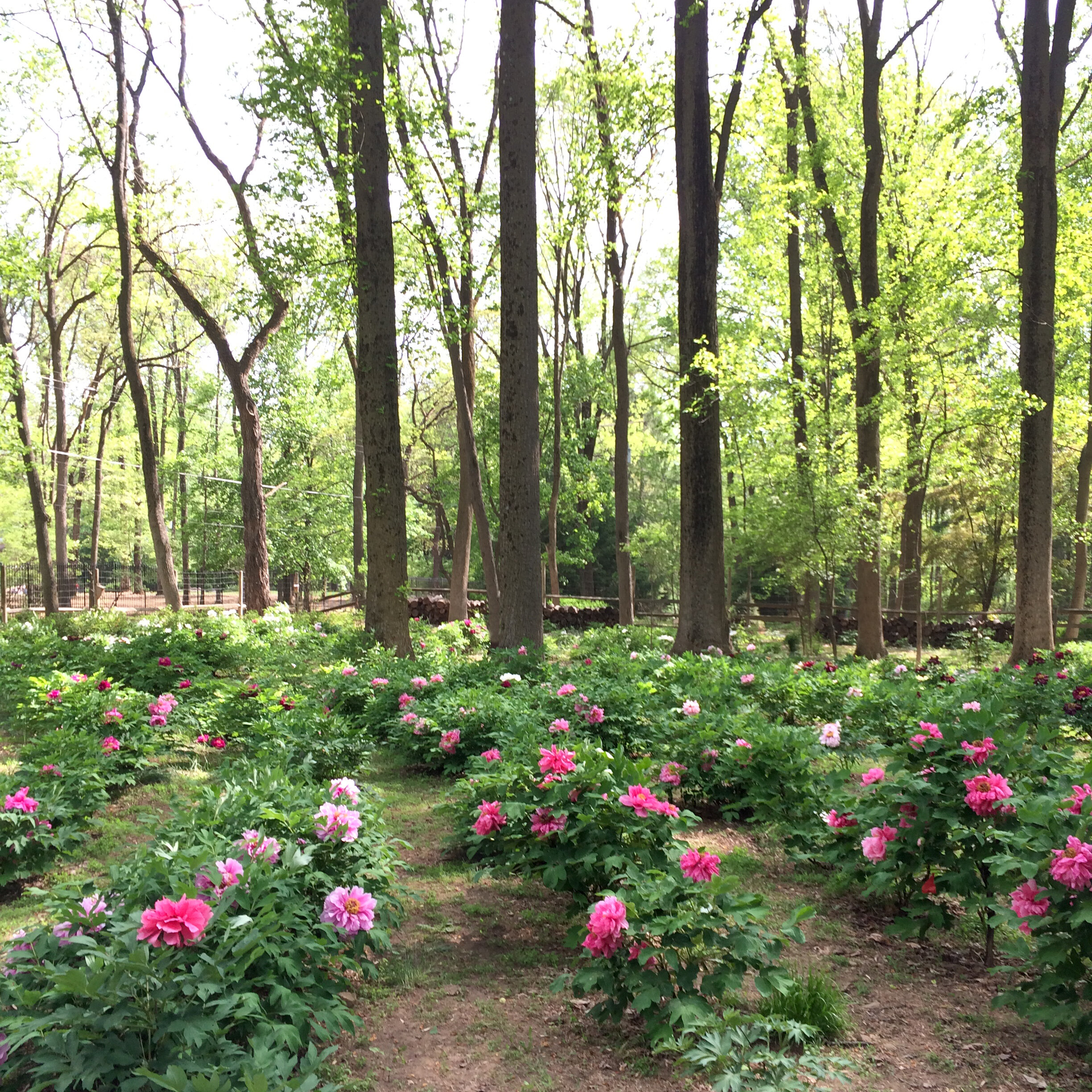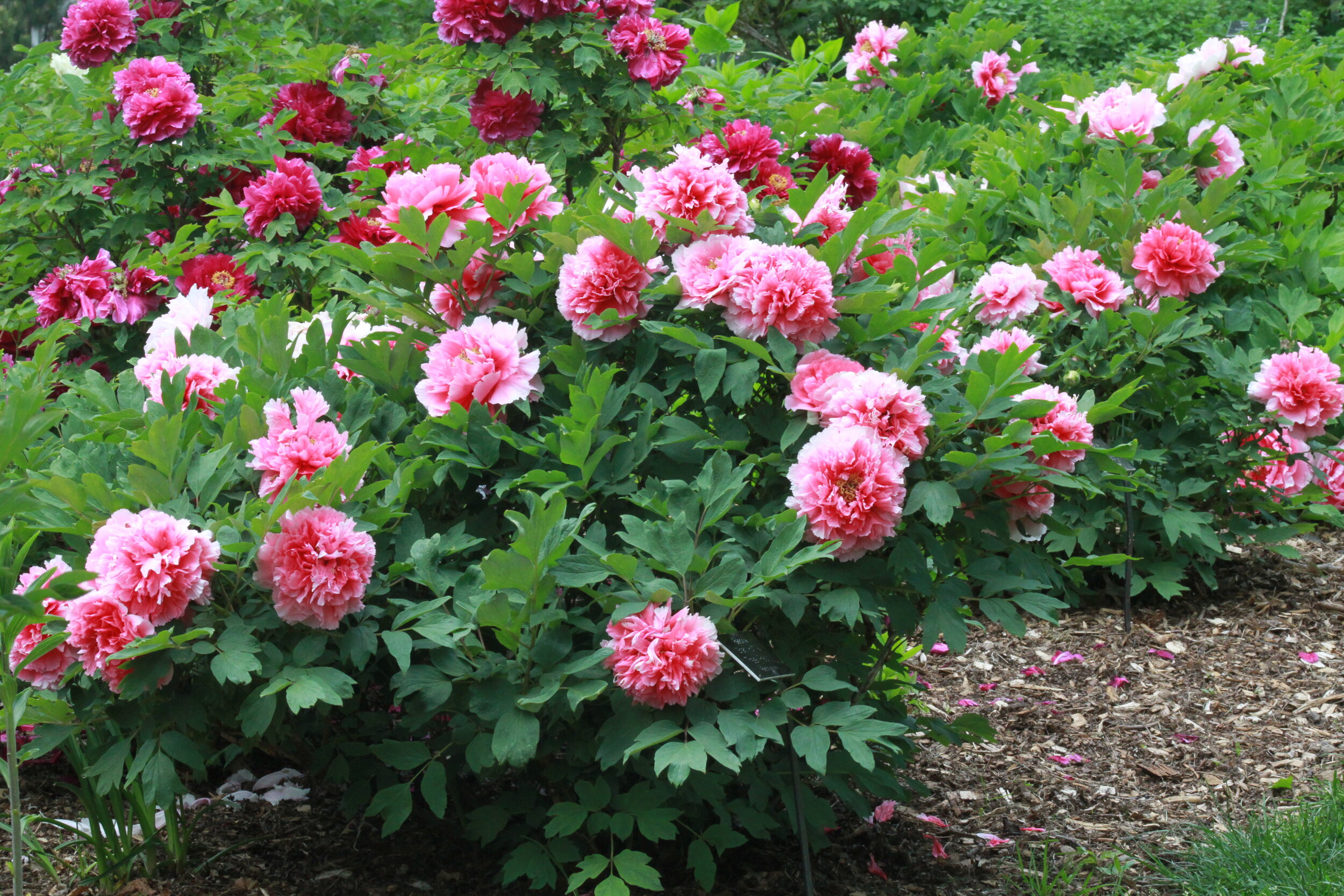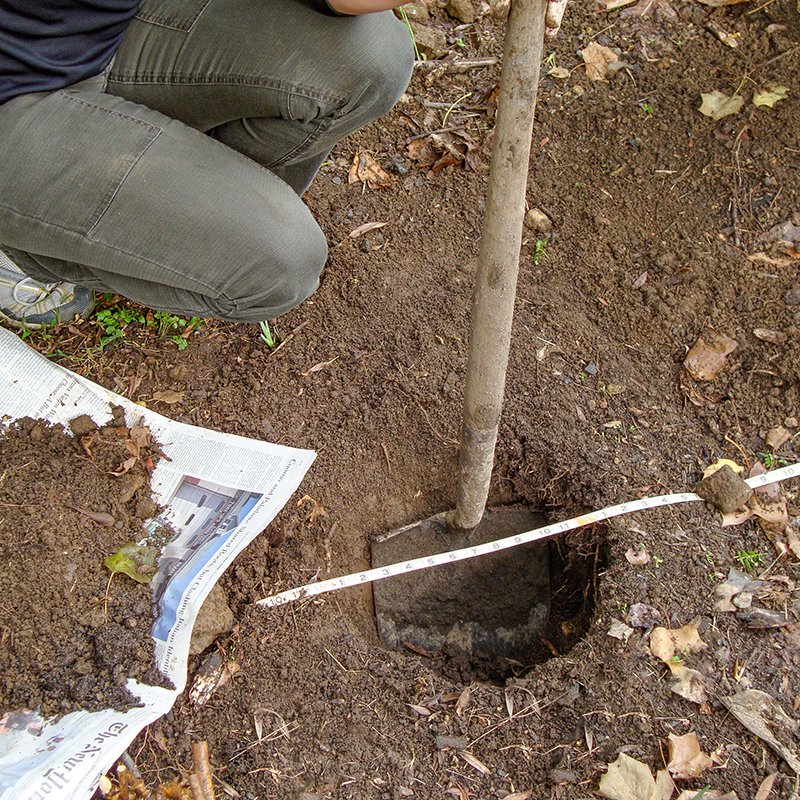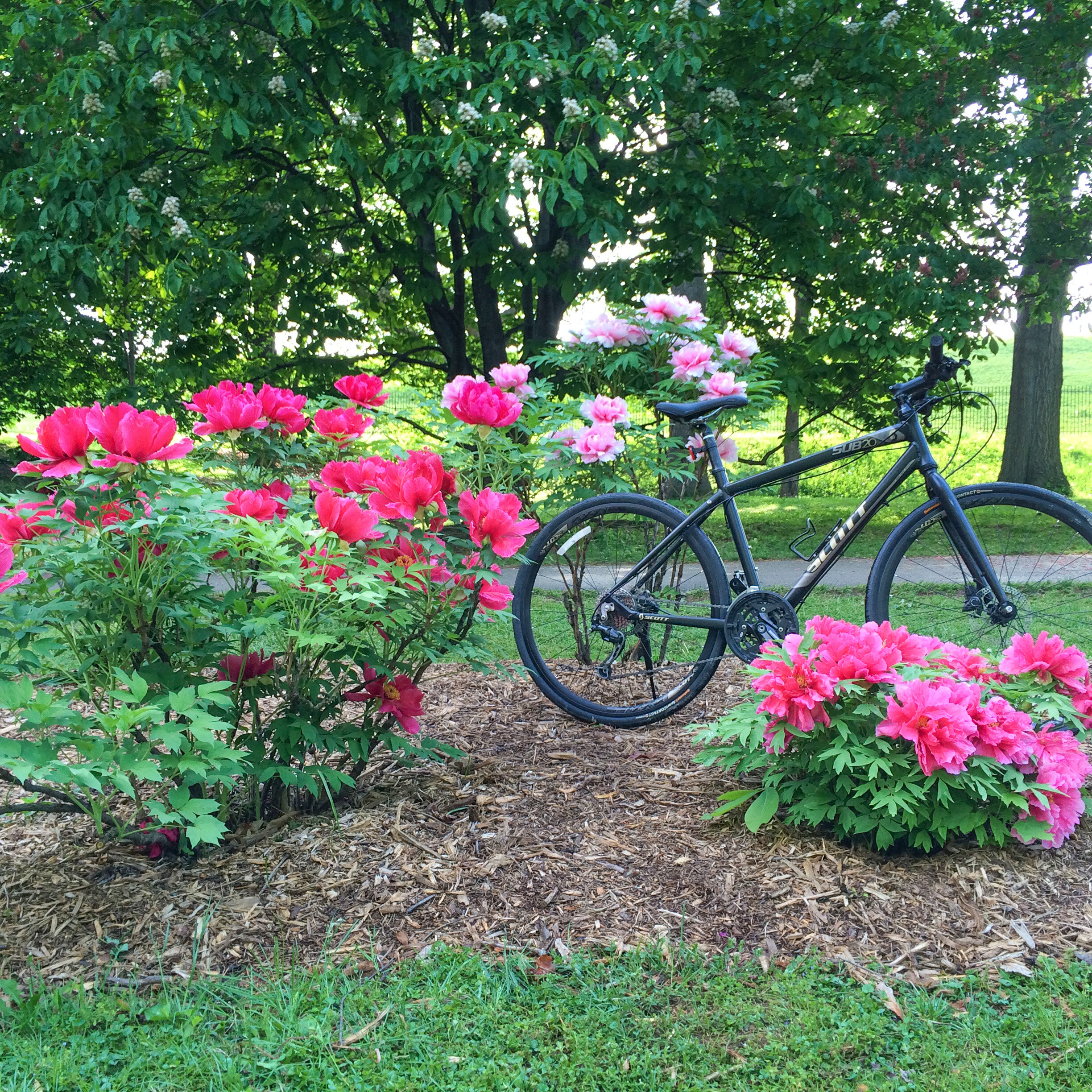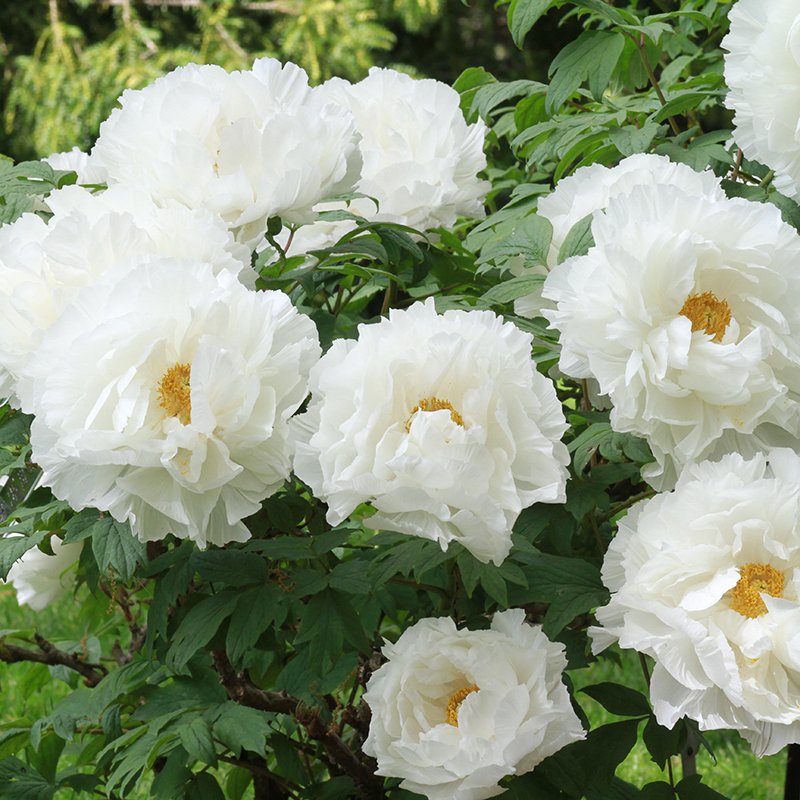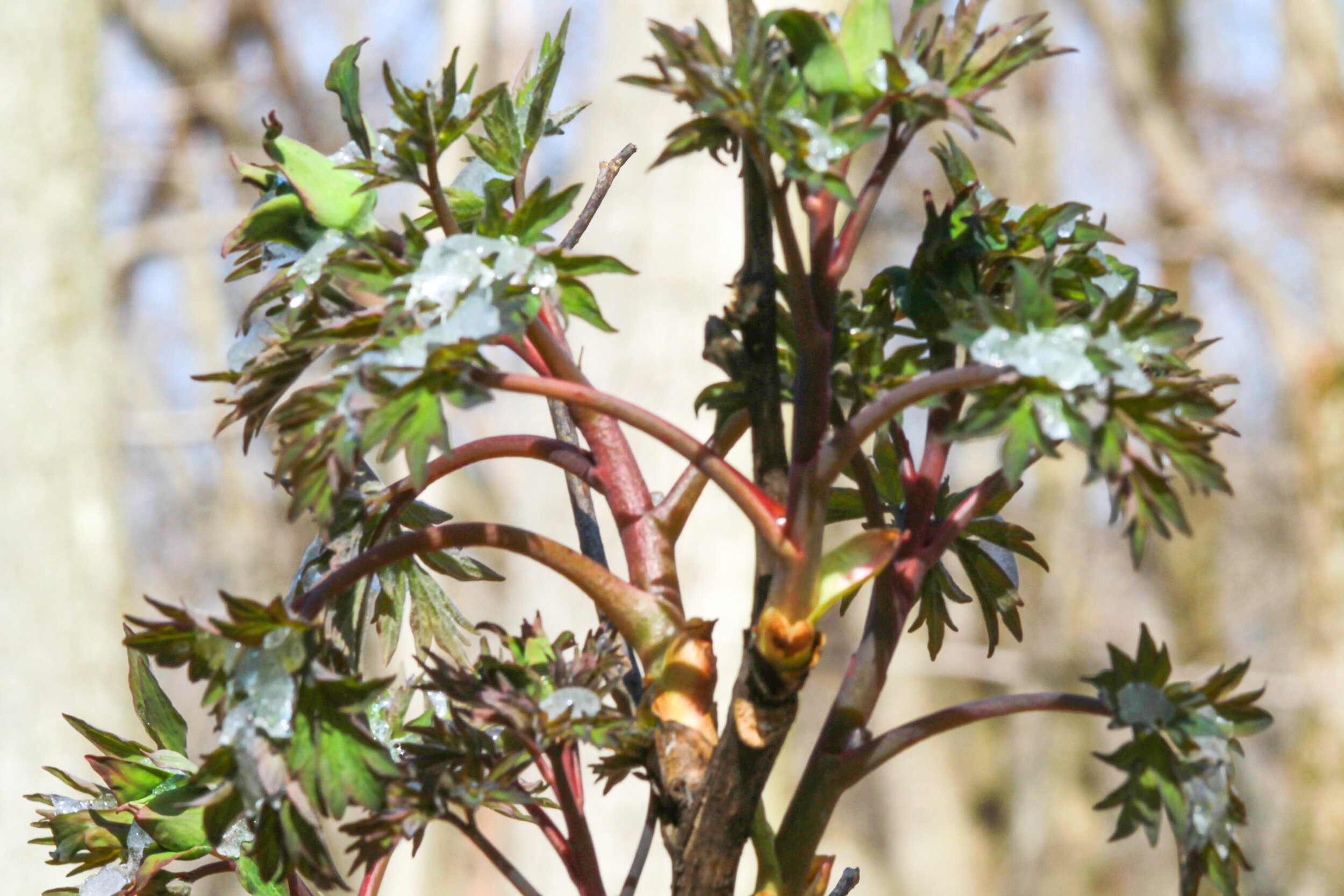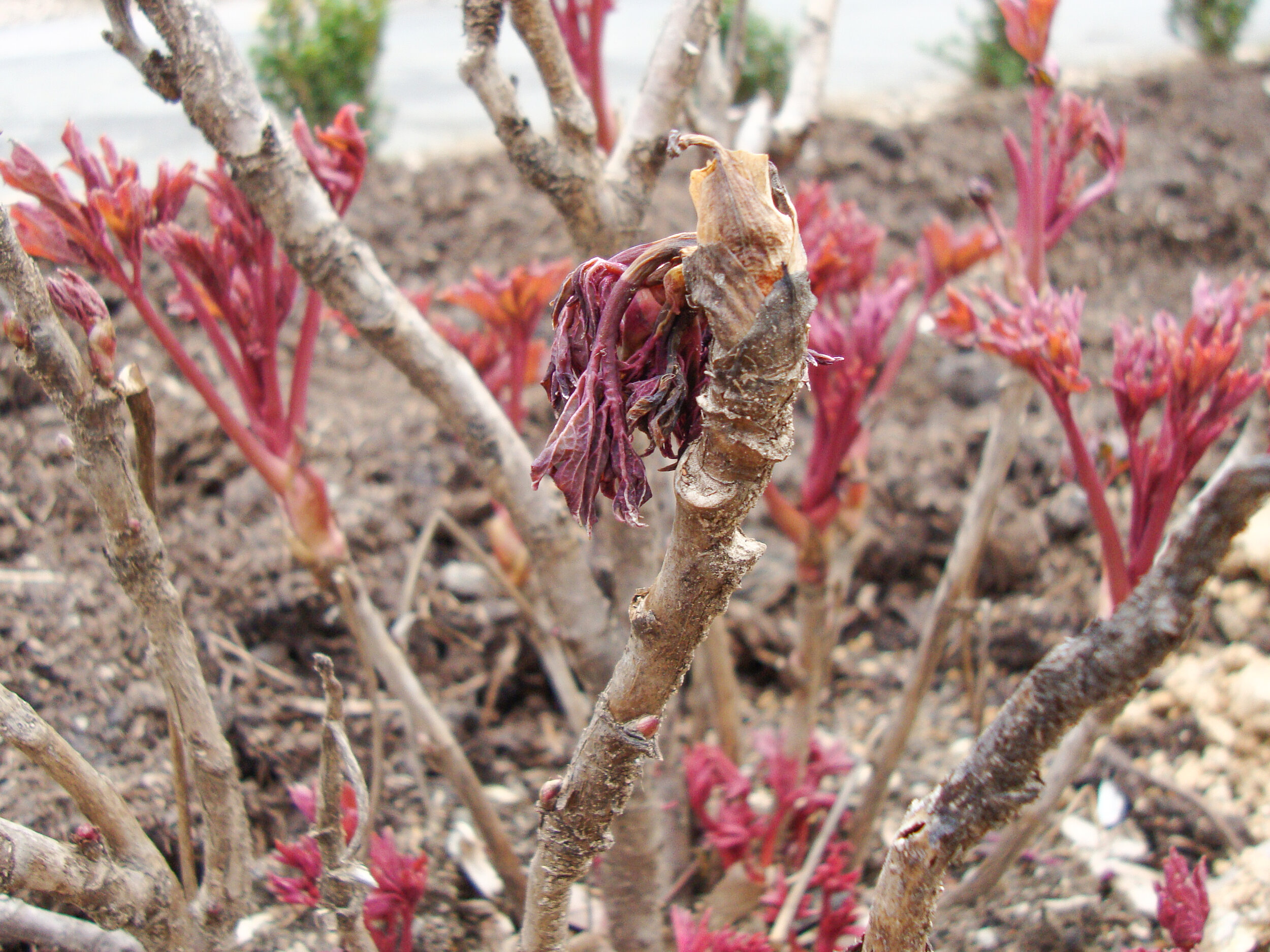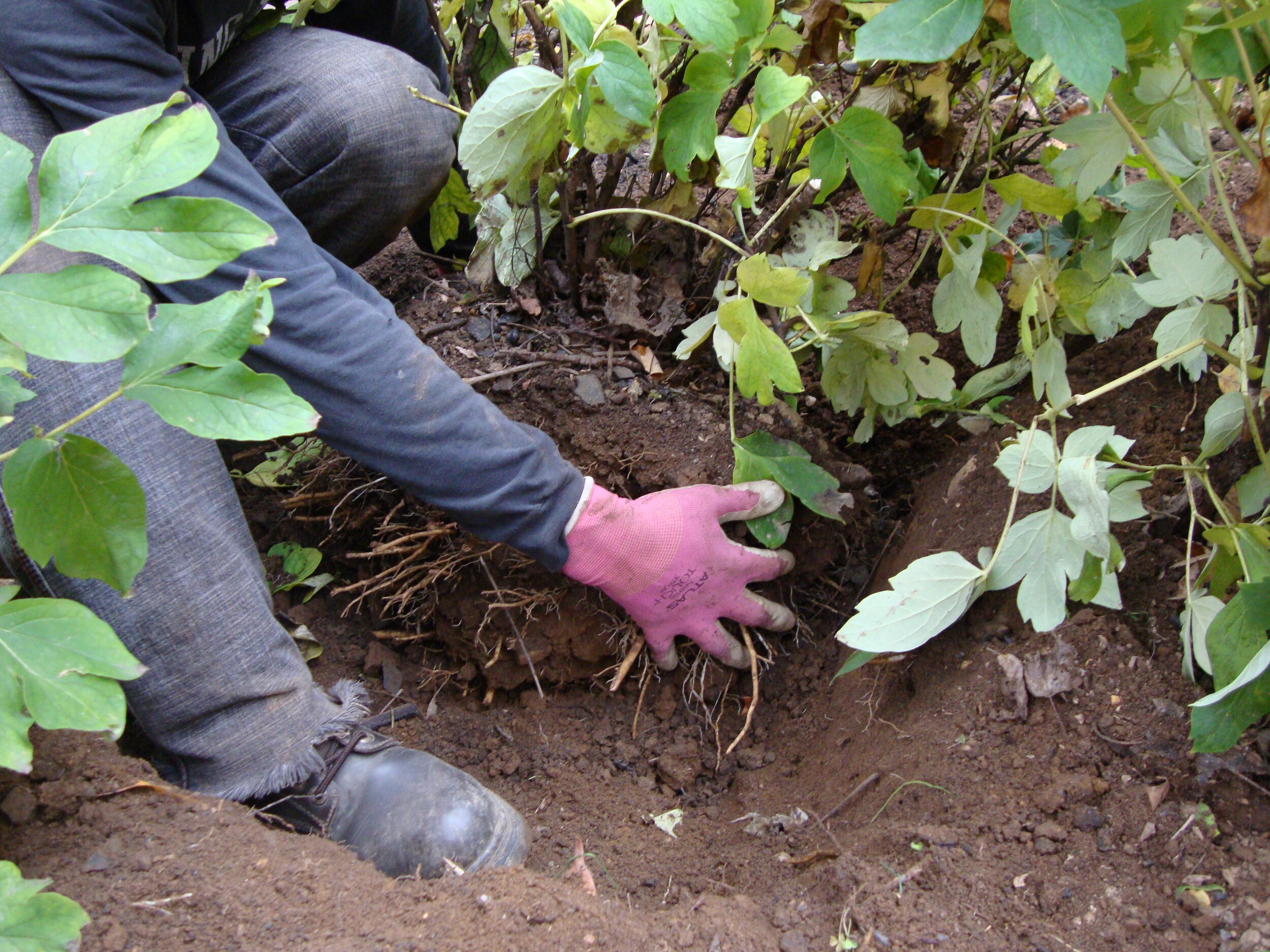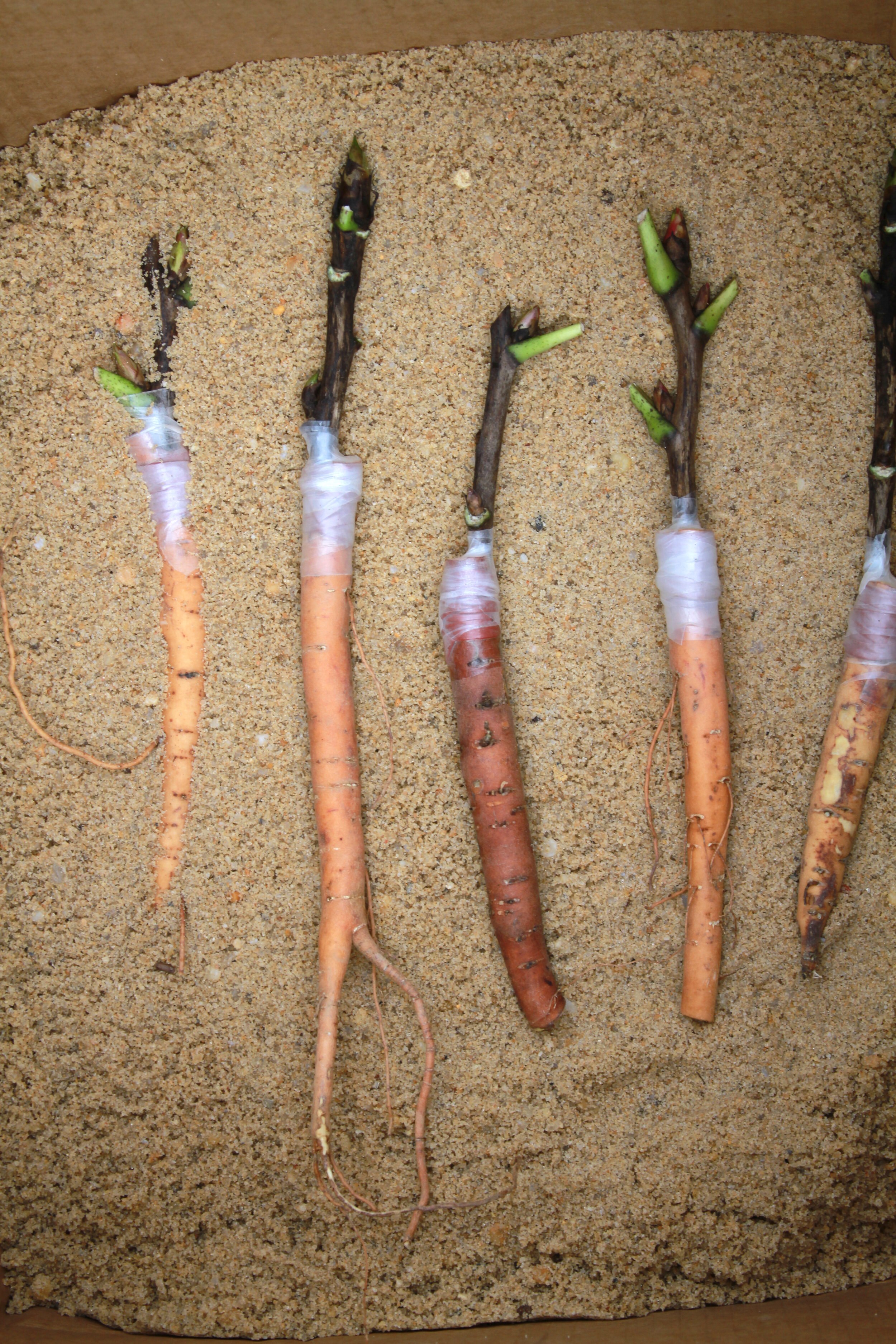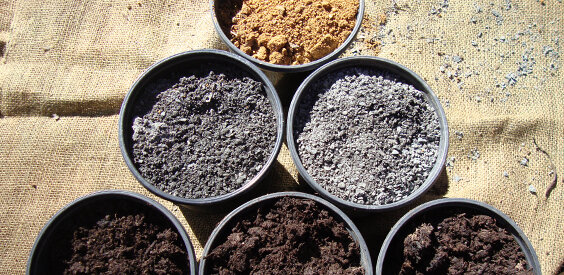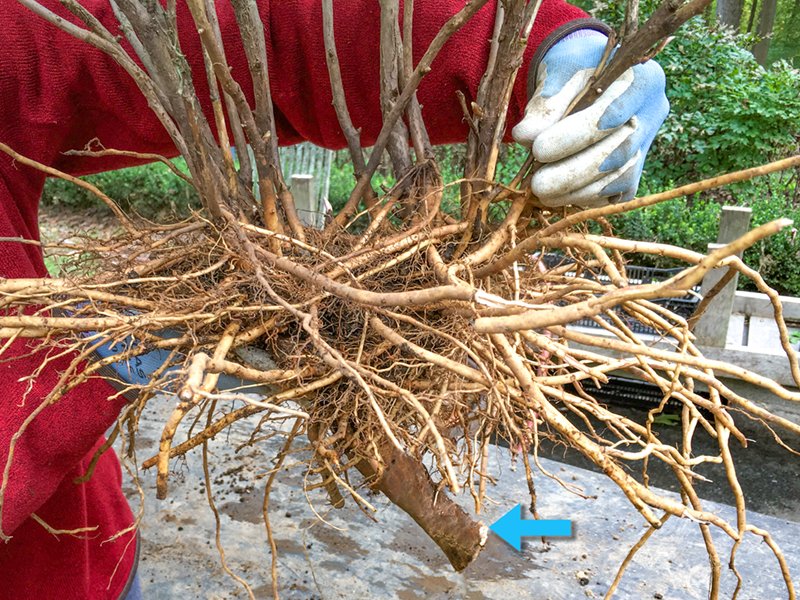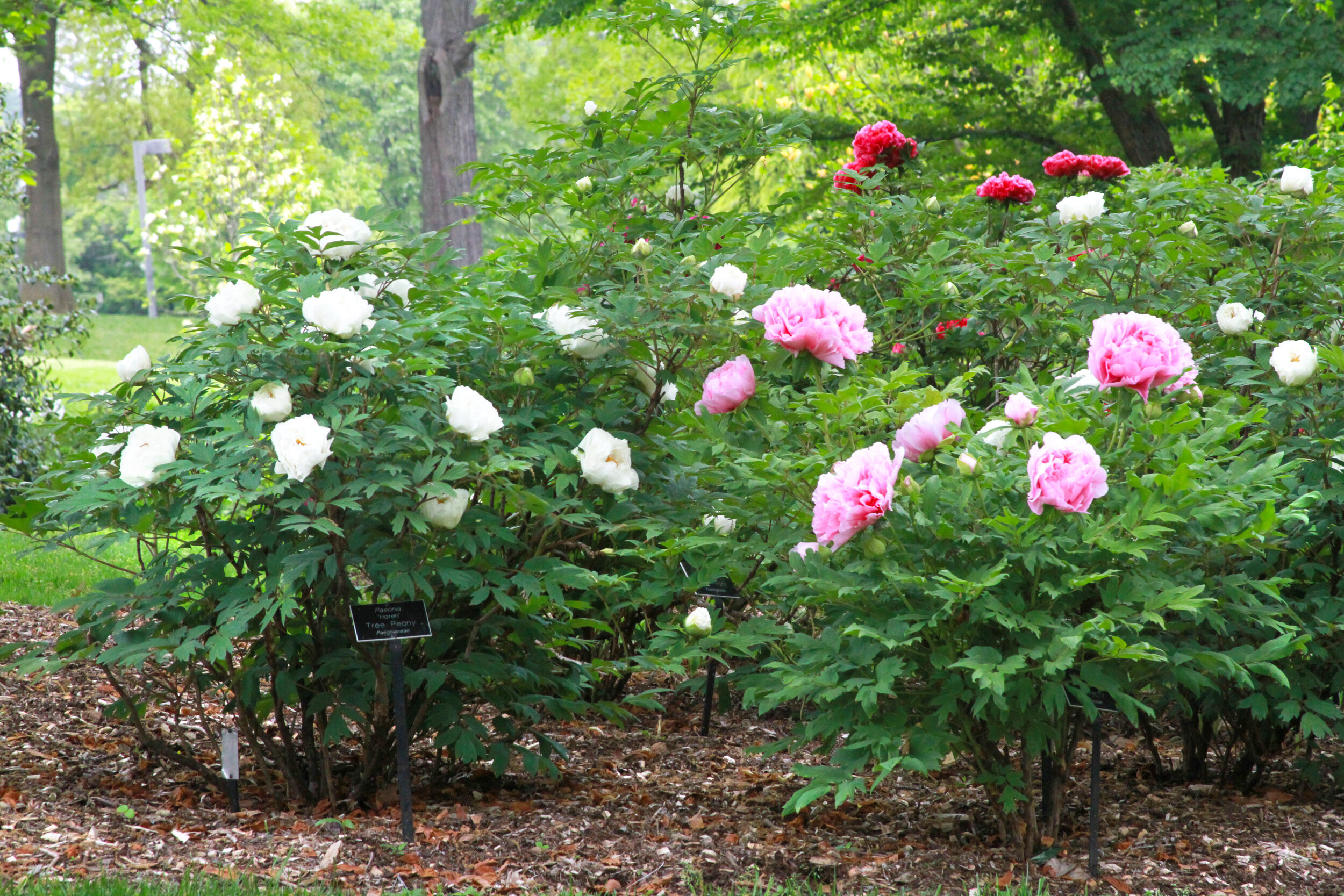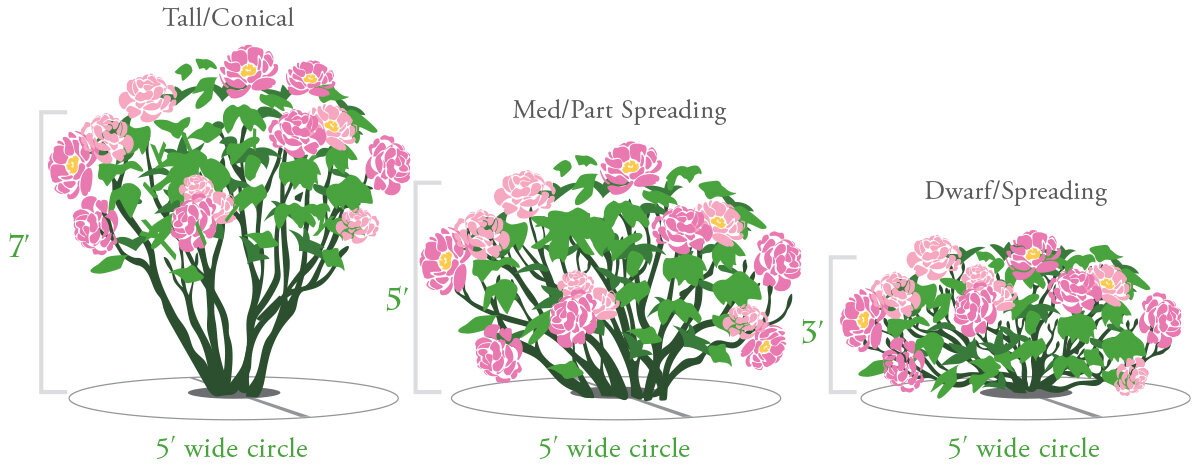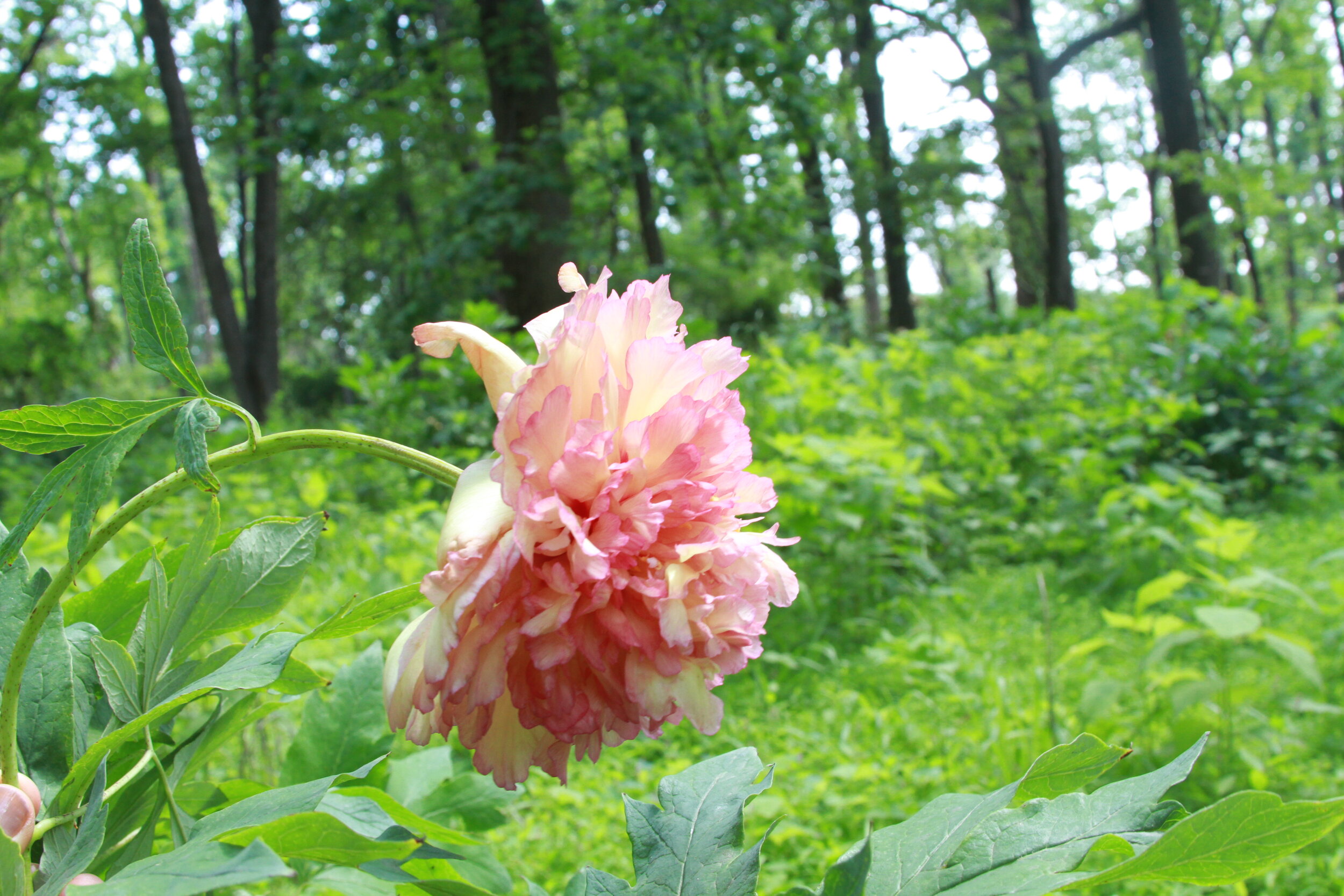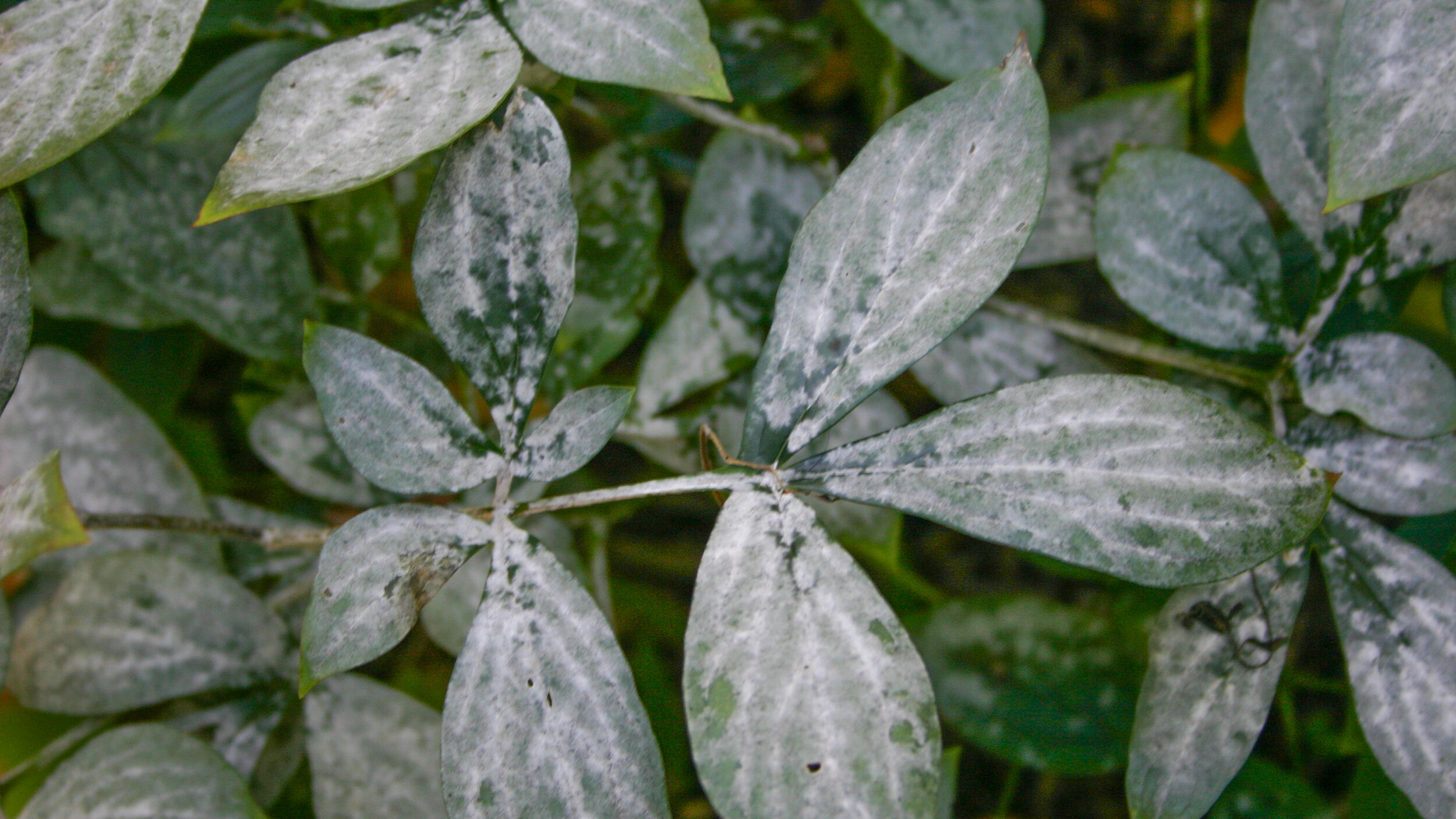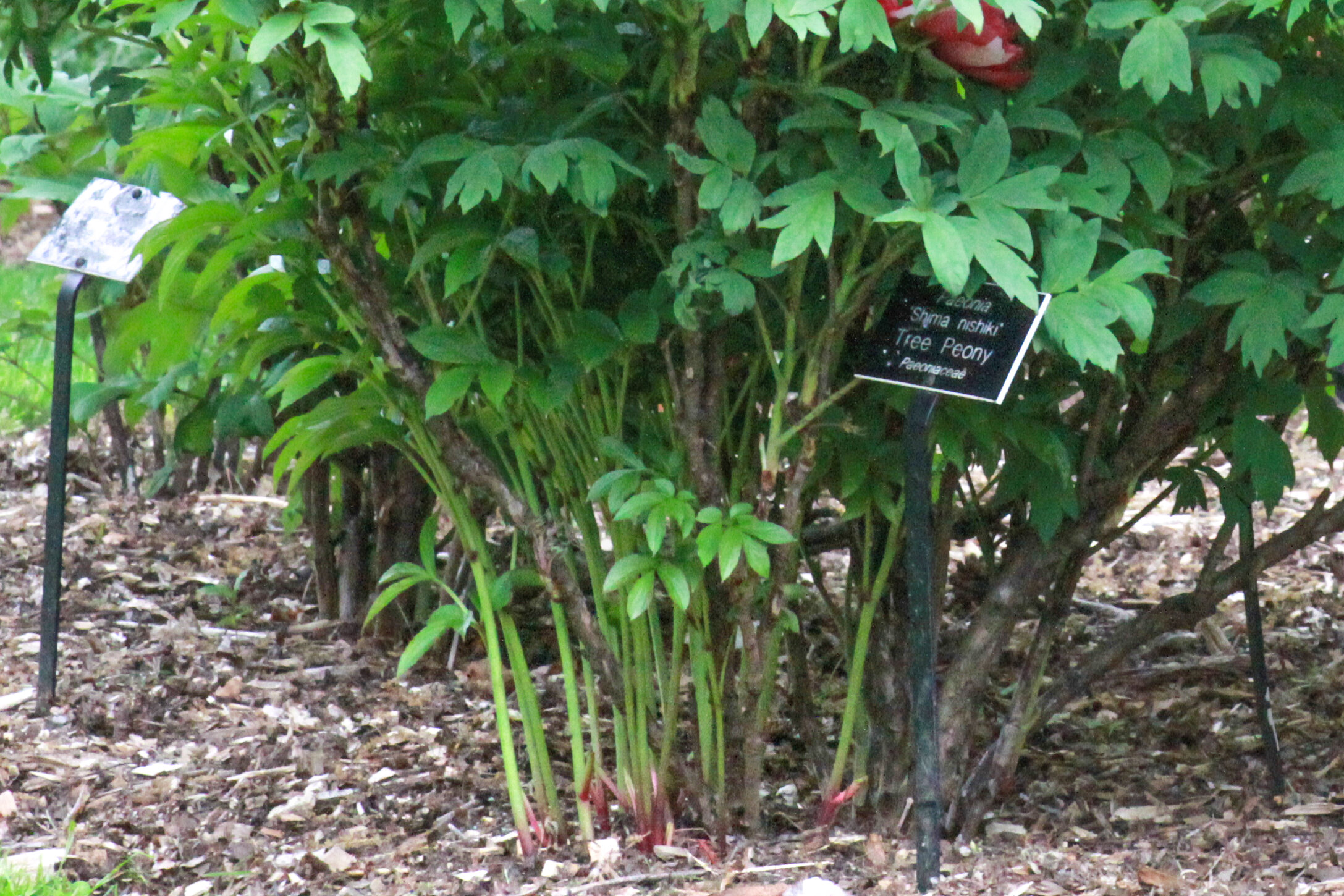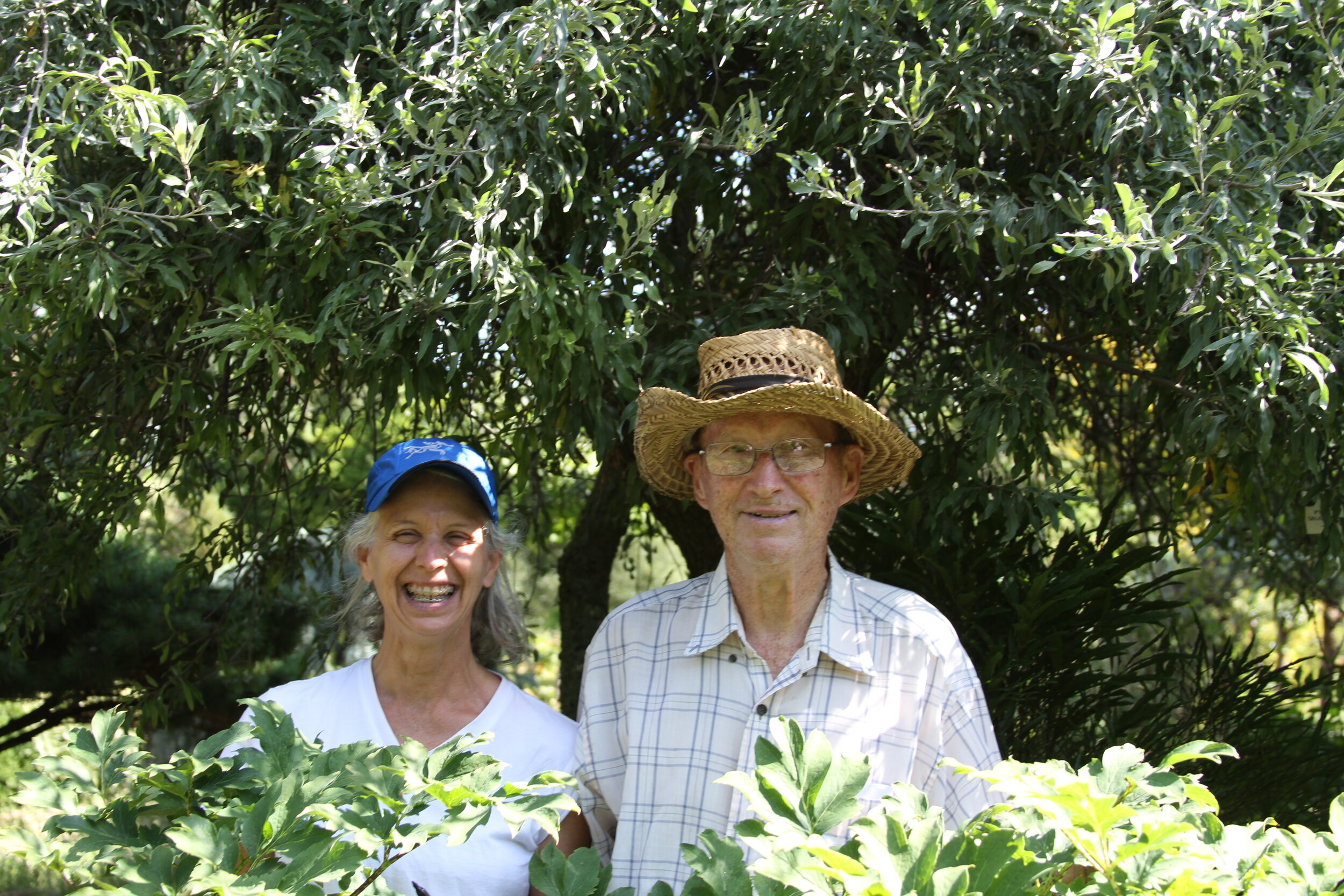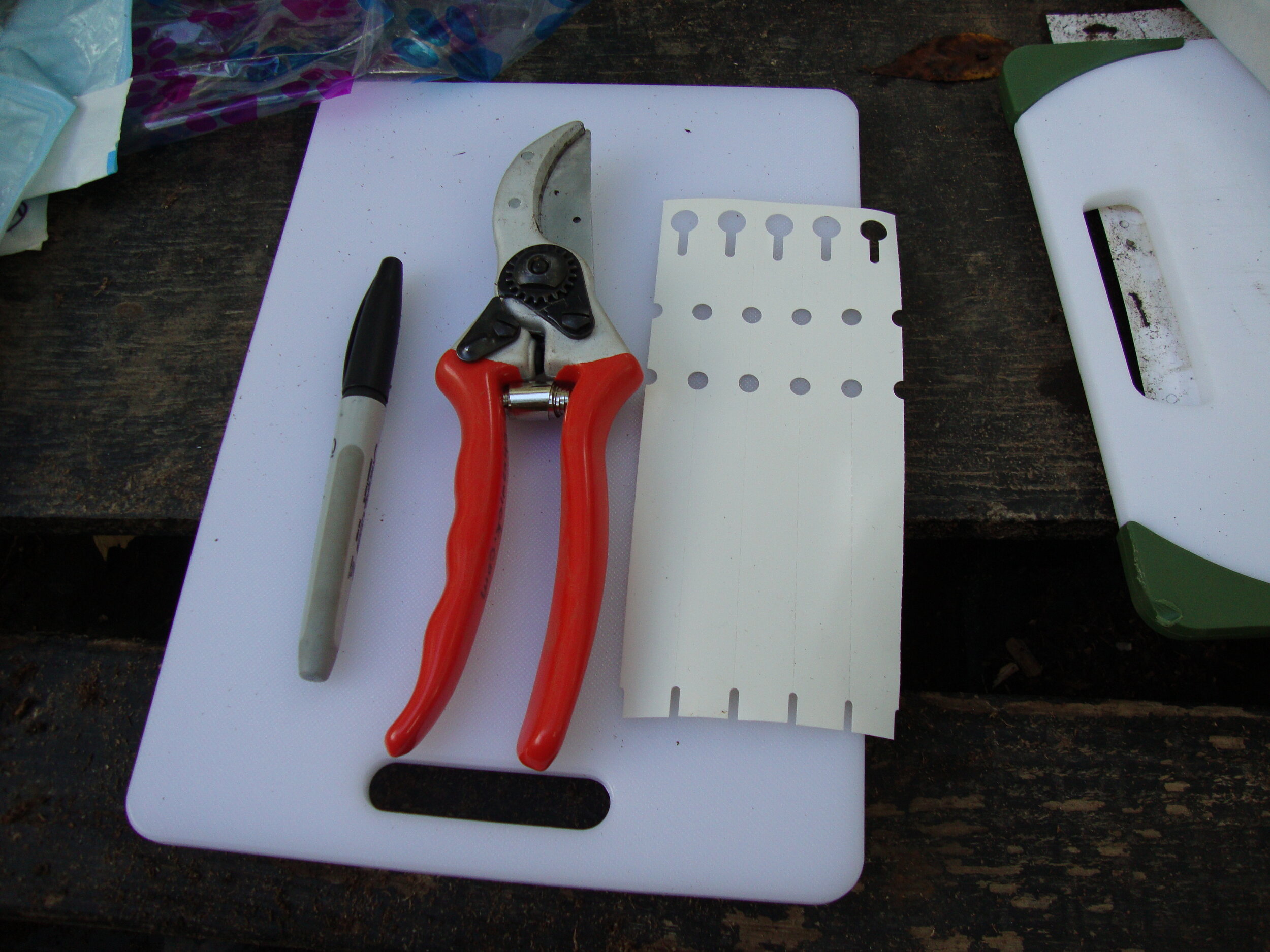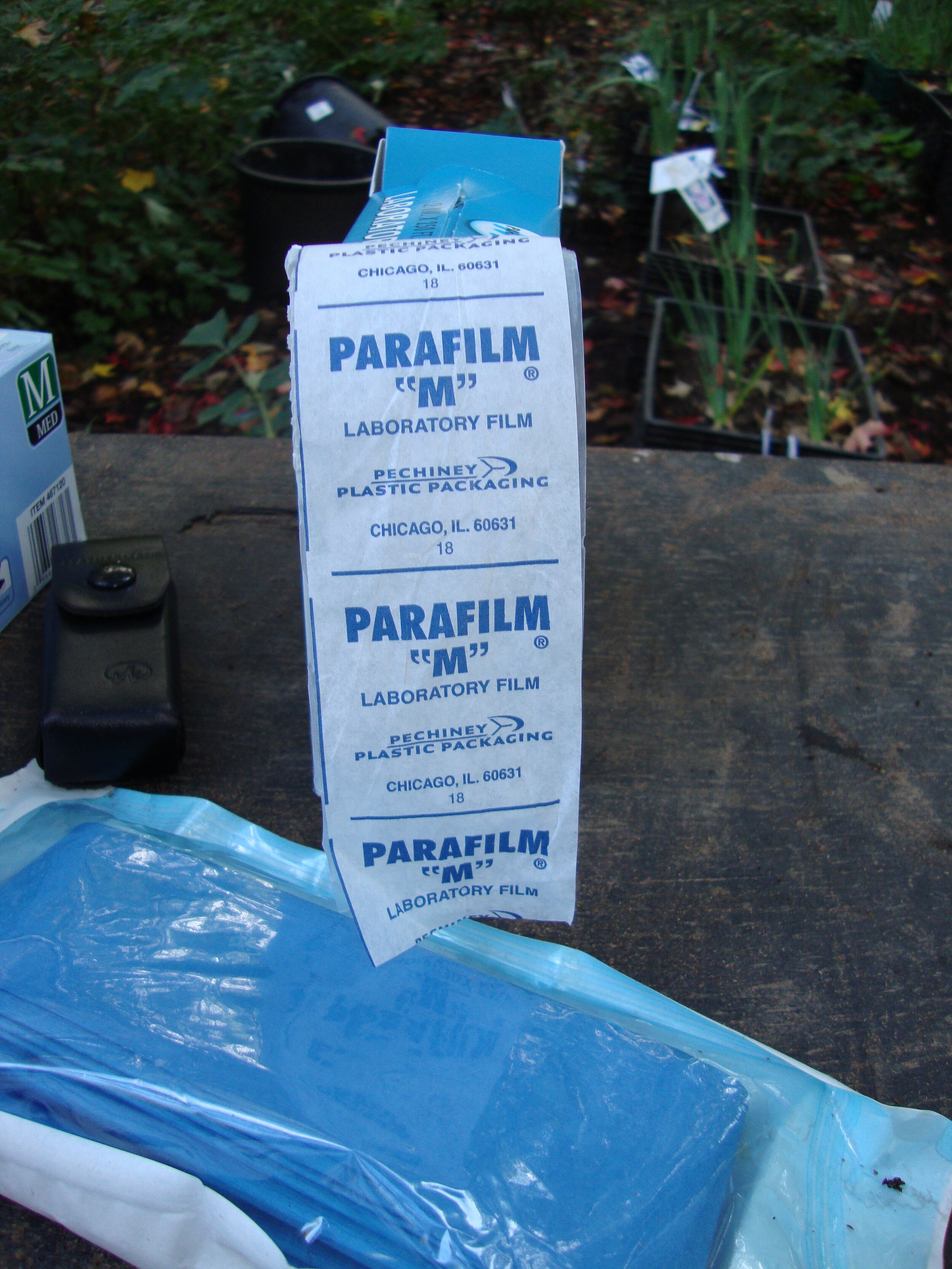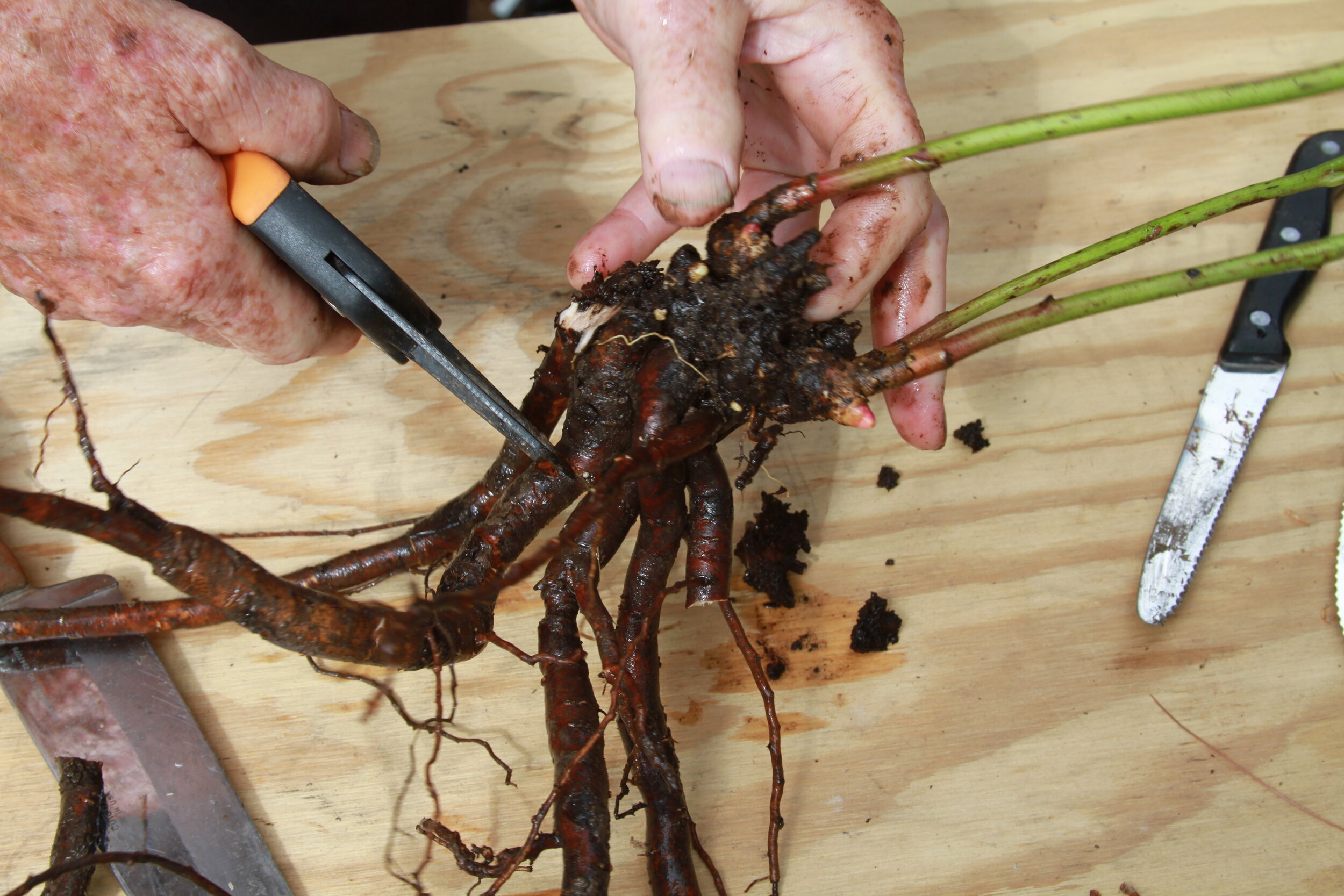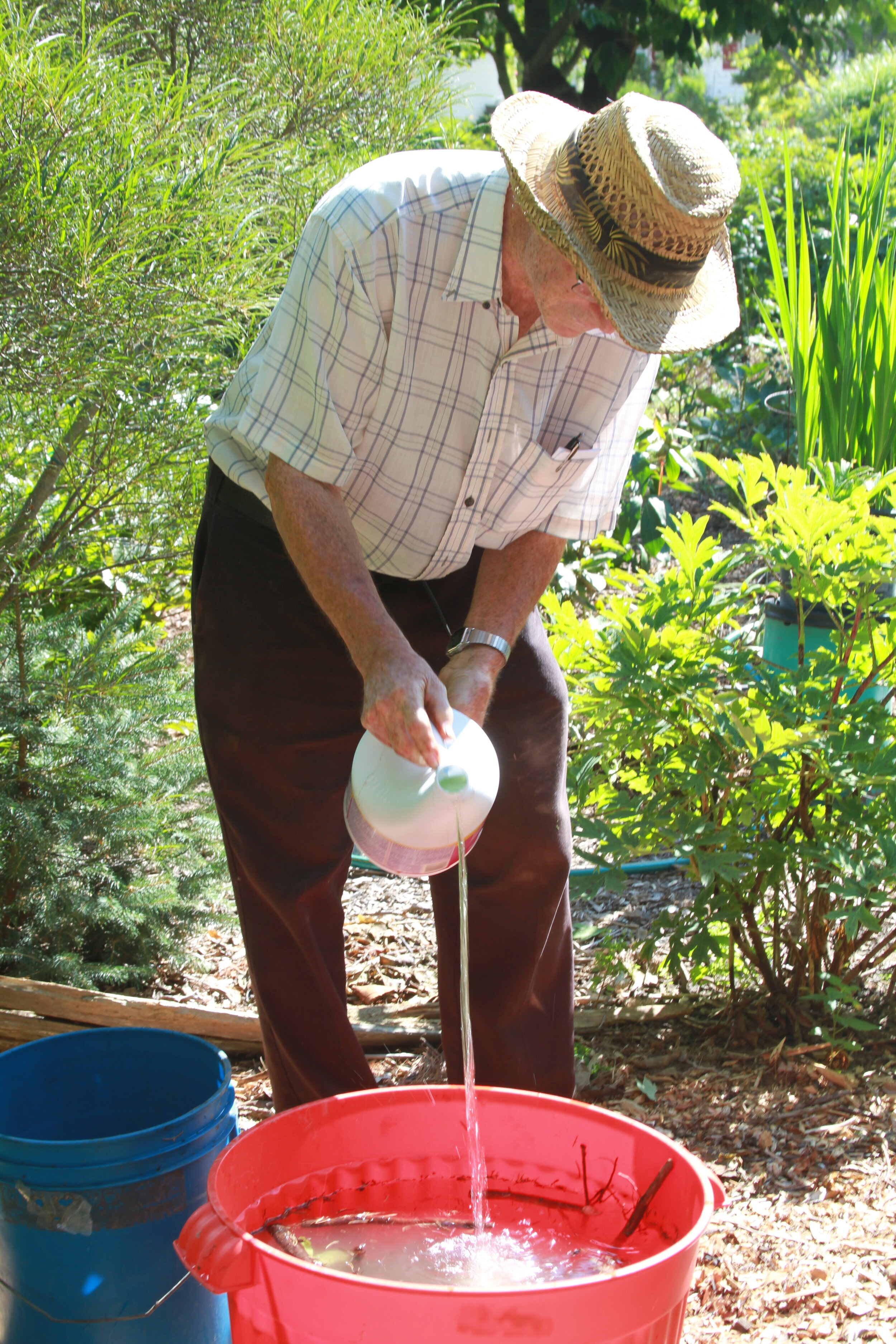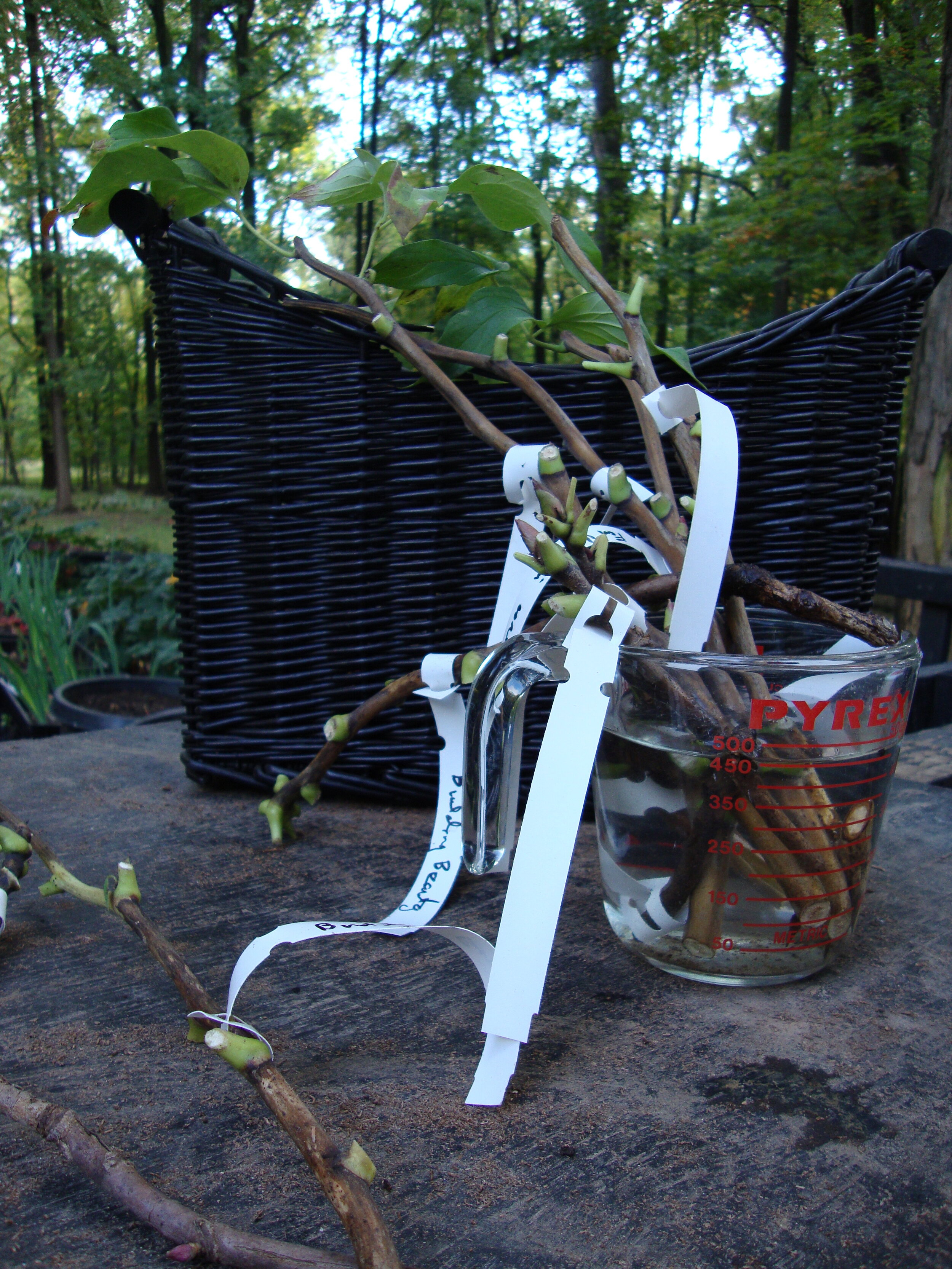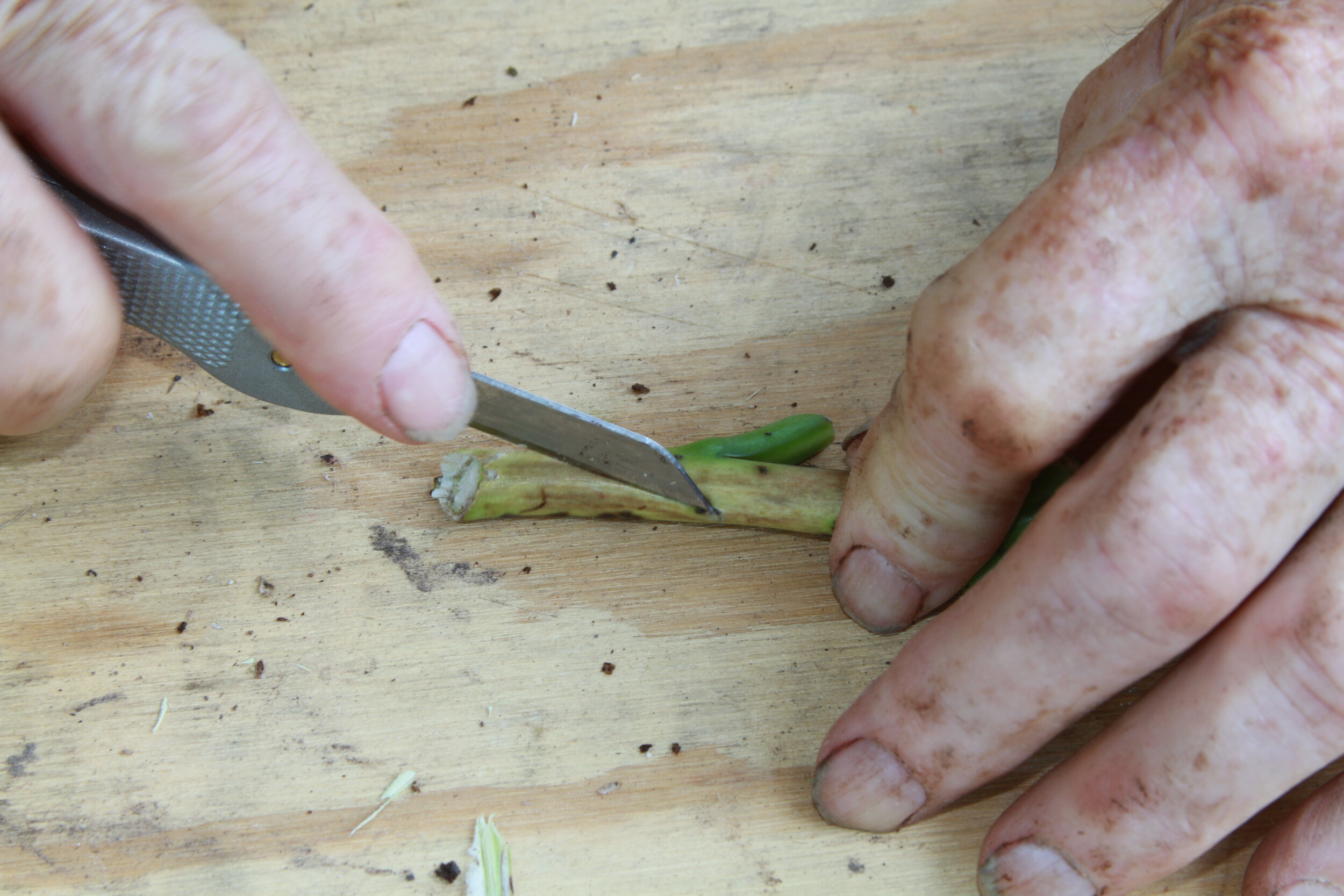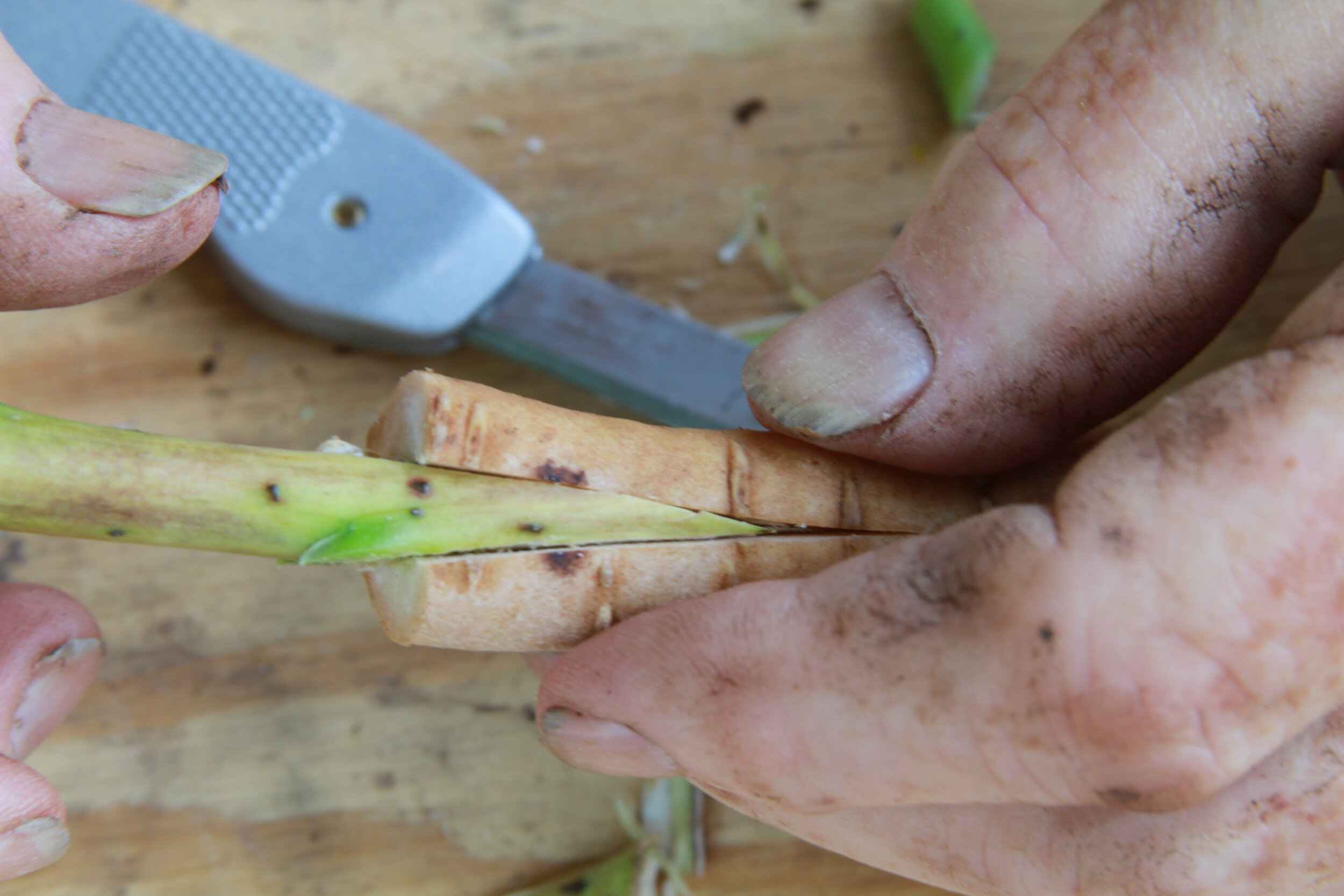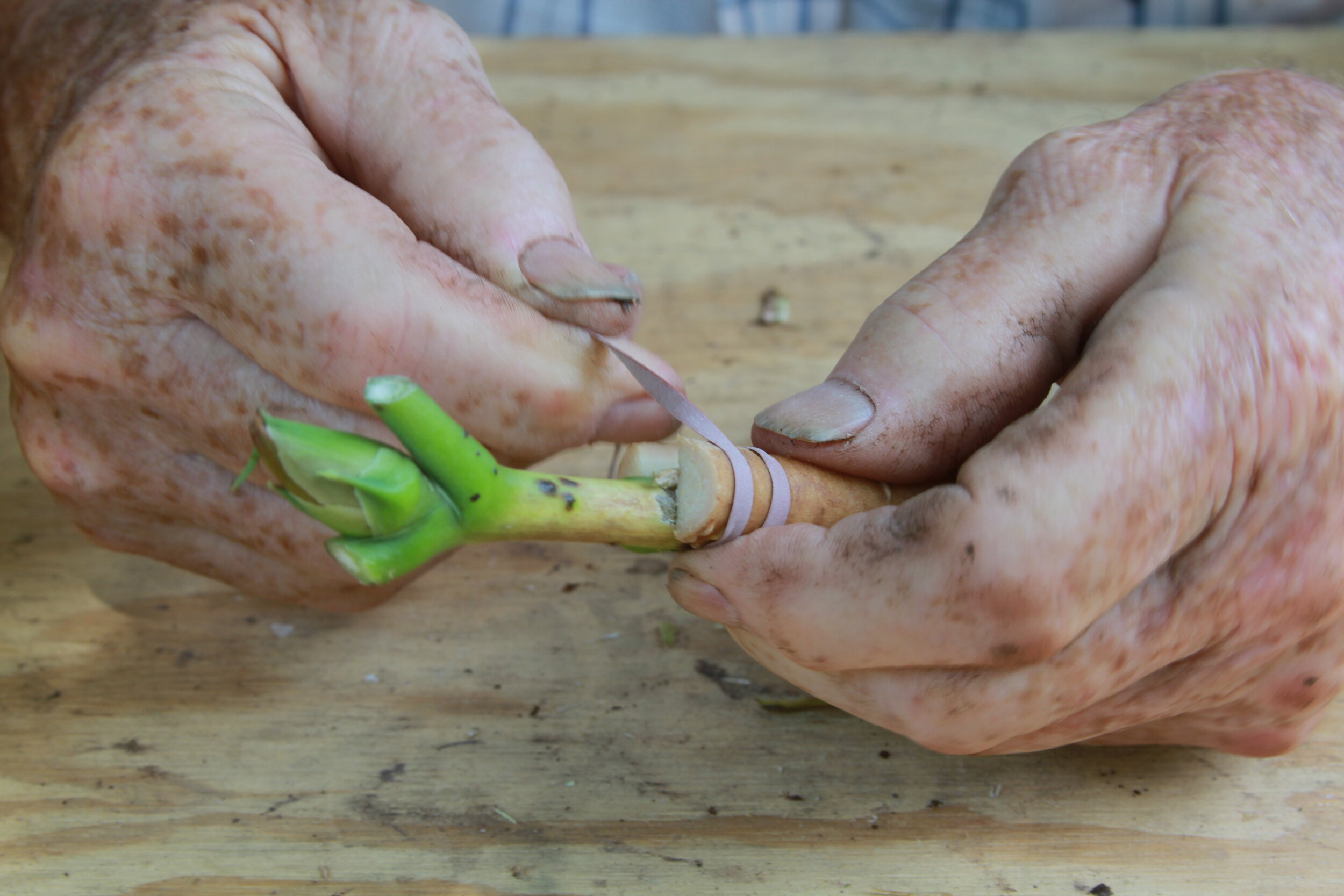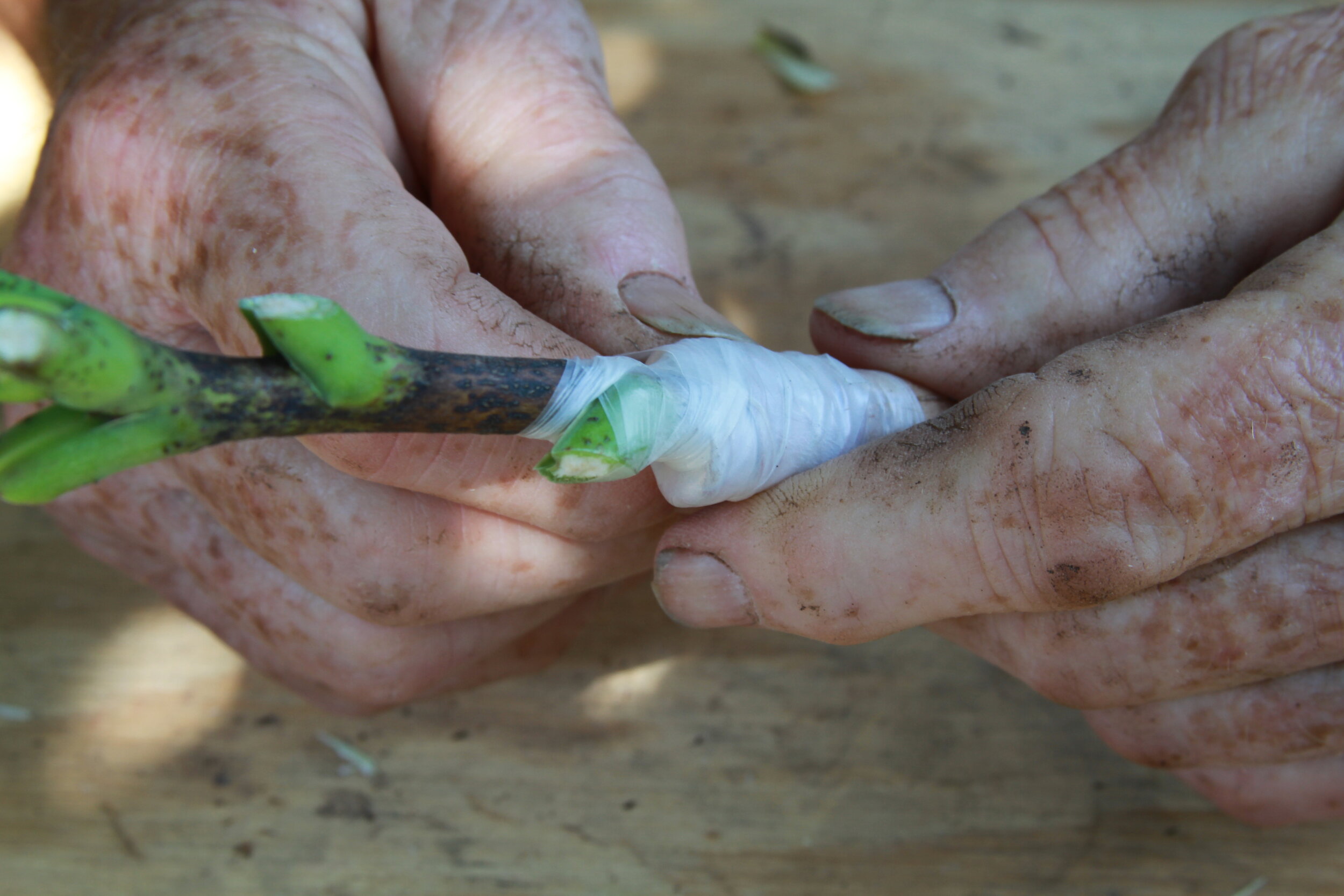SYMPTOMS: Small circular round spots begin to appear in spring just before the plants flower. The spots will increase in size and are not often detected until mid summer. If left unchecked spots can eventually cover the whole plant.
TESTING: We encourage you to get your plants tested so you know exactly what you are dealing with. Send a sample to your State’s Agricultural University ‘s Plant Diagnostic Center for laboratory diagnosis and treatment recommendations. At Peony’s Envy we use both the Plant Diagnostic Laboratory of Rutgers NJAES and the Cornell Plant Disease Diagnostic Clinic.
OUTLOOK: Does not immediately kill the plant but successive years of the fungal disease will impact the health of the plant.
TREATMENT: When noticed, cut off diseased portions of the plant, dipping the pruners in a 10% solution of bleach (or use Clorox wipes) between each cut to ensure the disease does not spread. Clean up all debris around the plants, and throw all of this matter away - do not compost. Use a fungicide that is intended for Peony Blotch on peonies, apply according to the manufacturers instructions.
PREVENTION: Healthy plants are less susceptible to disease. Peonies require the proper amount of sun, nutritious soil, good air circulation, and the right amount of water. Encourage good air circulation by spacing peonies at least 3 feet apart and by keeping the base of each plant clean and free of weeds. Water only as needed and always in the morning using drip irrigation; do not use overhead irrigation and avoid watering at night. Never plant peonies in low-lying areas where soils flood. Amend soils prior to planting to ensure good drainage and proper nutrition. Use compost to maintain nutritious soil. Keep a close eye on your peony plants especially during early spring rains when fungi and viruses begin to take hold.
Phytophthora Blight - Phytophthora cactorum (Fungus)
SYMPTOMS: Phytophthora blight is a soil-borne fungus. The stems at the base of the plant will begin to darken and then wilt and die. Leaves may appear drought stressed. The entire plant may rot making it easy to pull from the ground. The fungus can survive in the soil for years as long as moist conditions persist. Can be spread by garden tools and contaminated soil. Symptoms are often more evident during periods of low rainfall making it easy to confuse the onset of this disease with drought.
TESTING: We encourage you to get your plants tested so you know exactly what you are dealing with. Send a sample to your State’s Agricultural University ‘s Plant Diagnostic Center for laboratory diagnosis and treatment recommendations. At Peony’s Envy we use both the Plant Diagnostic Laboratory of Rutgers NJAES and the Cornell Plant Disease Diagnostic Clinic.
OUTLOOK: Phytophthora can kill peonies and other plants.
TREATMENT: When noticed, cut off diseased portions of the plant, dipping the pruners in a 10% solution of bleach (or use Clorox wipes) between each cut to ensure the disease does not spread. Clean up all debris around the plants, and throw all of this matter away - do not compost. Rutgers Diagnostic Lab notes that the fungicide Subdue can be used to treat Phytophthora on peonies, apply according to the manufacturers instructions. Be sure to treat both the plant and the soil. Improve soil drainage and prevent water from pooling near plants.
PREVENTION: Healthy plants are less susceptible to disease. Peonies require the proper amount of sun, nutritious soil, good air circulation, and the right amount of water. Encourage good air circulation by spacing peonies at least 3 feet apart and by keeping the base of each plant clean and free of weeds. Water only as needed and always in the morning using drip irrigation; do not use overhead irrigation and avoid watering at night. Never plant peonies in low-lying areas where soils flood. Amend soils prior to planting to ensure good drainage and proper nutrition. Use compost to maintain nutritious soil. Keep a close eye on your peony plants especially during early spring rains when fungi and viruses begin to take hold.
Sclerotinia Rot/Southern Blight (Fungus)
SYMPTOMS: Sclerotinia Rot is a soil-borne fungus.Rot begins at the base of the plant with water-soaked stem lesions. Leaves will turn yellow and die. During times of high humidity a white cotton-like fungus spreads around the base of the plant and the soil. The fungal fruiting bodies appear like small collections of mustard seeds on the ground near the base of the plant.They may eventually form a crust on the soil.
TESTING: We encourage you to get your plants tested so you know exactly what you are dealing with. Send a sample to your State’s Agricultural University ‘s Plant Diagnostic Center for laboratory diagnosis and treatment recommendations. At Peony’s Envy we use both the Plant Diagnostic Laboratory of Rutgers NJAES and the Cornell Plant Disease Diagnostic Clinic.
OUTLOOK: Sclerotina can kill peonies and other plants.
TREATMENT: Rutgers Diagnostic Lab recommends using either Heritage or Headway for use on peonies for Sclerotina Rot, apply according to manufacturers directions. Be sure to treat both the plant and the soil. If that fails, remove diseased plants and the surrounding soil from your garden, do not compost. Sterilize all tools. Cover the area with clear plastic and leave it for two to three months in the heat of summer. After this period, increase the drainage in your soil and leave the soil fallow for at least one season before replanting.
PREVENTION: Healthy plants are less susceptible to disease. Peonies require the proper amount of sun, nutritious soil, good air circulation, and the right amount of water. Encourage good air circulation by spacing peonies at least 3 feet apart and by keeping the base of each plant clean and free of weeds. Water only as needed and always in the morning using drip irrigation; do not use overhead irrigation and avoid watering at night. Never plant peonies in low-lying areas where soils flood. Amend soils prior to planting to ensure good drainage and proper nutrition. Use compost to maintain nutritious soil. Keep a close eye on your peony plants especially during early spring rains when fungi and viruses begin to take hold.
Viral Diseases
Peonies are also susceptible to a small number of viruses including peony ringspot virus, leaf curl, Le Moine disease, and the mosaic virus. These are rare, difficult to cure, and it is generally recommended to remove infected plants from your garden.
SYMPTOMS: Poor growth and stunted growth. Leaves will have a mottled/mosaic appearance. Portions of the leaves can turn yellow and die. Can be spread by insects or tools.
TESTING: We encourage you to get your plants tested so you know exactly what you are dealing with. Send a sample to your State’s Agricultural University ‘s Plant Diagnostic Center for laboratory diagnosis and treatment recommendations. At Peony’s Envy we use both the Plant Diagnostic Laboratory of Rutgers NJAES and the Cornell Plant Disease Diagnostic Clinic.
OUTLOOK: Viral diseases can kill peonies and other plants. Remove and dispose of infected plants, do not compost.
PREVENTION: Healthy plants are less susceptible to disease. Peonies require the proper amount of sun, nutritious soil, good air circulation, and the right amount of water. Encourage good air circulation by spacing peonies at least 3 feet apart and by keeping the base of each plant clean and free of weeds. Water only as needed and always in the morning using drip irrigation; do not use overhead irrigation and avoid watering at night. Never plant peonies in low-lying areas where soils flood. Amend soils prior to planting to ensure good drainage and proper nutrition. Use compost to maintain nutritious soil. Keep a close eye on your peony plants especially during early spring rains when fungi and viruses begin to take hold.
Chafer Beetles
SYMPTOMS: Peony flowers being eaten. Chafer beetles look similar to Japanese beetles. They can be removed by hand or killed with almost any insecticide. Neem oil is an organic option, read the product label for more detailed instructions. Ants are a natural predator and chase away chafer beetles.
Bud-Blast
A wide variety of stressors can prevent peony buds from opening. This can include poor soil, immature plants, plants being buried too deeply, excessive mulch, not enough sun, and early spring frosts. Check the depth of your peony and adjust if necessary.
Tree Peonies Not Blooming
In most cases, if your tree peony is not blooming, it is simply not mature enough to produce flowers. This will self-correct as the plant becomes larger. See our section on growth expectations for images of what to expect of your tree peony. Know that when you do begin to get flowers on a newly planted tree peony, they will be small, about the size of a quarter, and that the flowers will enlarge as the plant matures.
It is uncommon to have mature tree peonies that do not bloom, but if you do you should first check the depth of the plant and make sure that it is buried sufficiently and the roots are not exposed, causing stress on the plant. If you have a very mature tree peony that has begun to bloom less, this could be to surrounding root and sun competition. Over time, surrounding trees and shrubs can shade out your peonies resulting in fewer and fewer flowers. The less sun you have the fewer flowers you will get.
Tree Peony Blooms Twice


